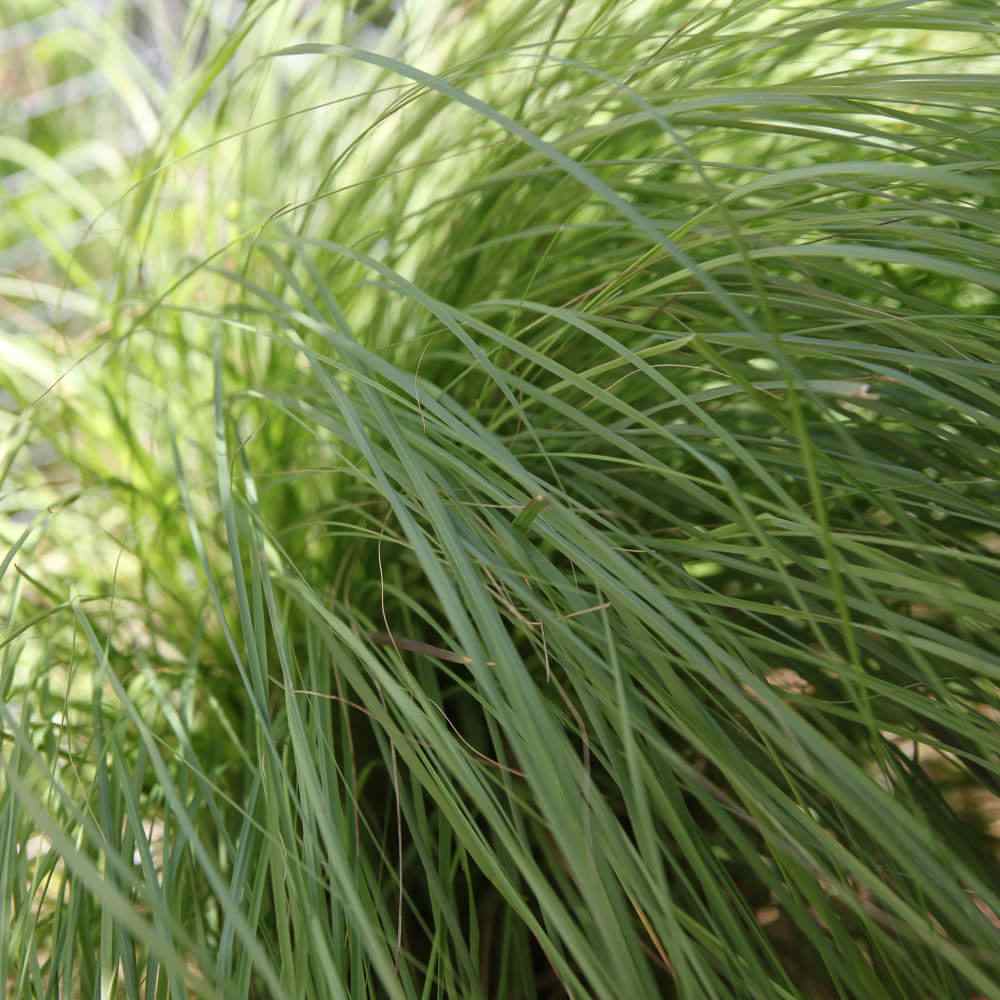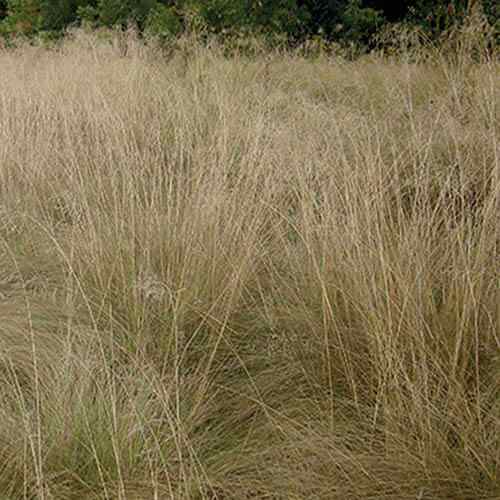-
CATEGORY ::
- All Seeds /
- All Ornamental Grass Seeds




Weeping Lovegrass
About...
Weeping Lovegrass (Eragrostis curvula) - A rapidly growing warm-season bunchgrass with narrow leaves emerging from a tight tuft with the tips almost touching the ground. The drooping leaf characteristic gives rise to the name "weeping" lovegrass.MORE ORNAMENTAL GRASS OPTIONS
Grass Specifications
SEASON
Perennial
USDA ZONES
6 - 10
HEIGHT
30 - 40 inches
FOLIAGE COLOR
Green
GROWTH RATE
Fast
FALL COLOR
Tan
SOIL REQUIREMENT
Light textured, well drained soils, pH 4.5 - 8.5
ENVIRONMENT
Full sun to partial shade
DEER RESISTANT
Yes
LATIN NAME
Eragrostis curvula
Planting Directions
TEMPERATURE
65F
AVERAGE GERM TIME
12 - 21 days
LIGHT REQUIRED
No
DEPTH
1/4 inch
SOWING RATE
1/8 lb per 1,000 SF
MOISTURE
Keep seeds continually moist until germination
Ornamental and Functional
Weeping lovegrass not only looks attractive in the landscape, it also helps to stabilize soil and control erosion.

Excellent Landscape Grass
How To Grow
Seed alone at a rate of 3 to 5 pounds per acre. This variety prefers light-textured soils that are well-drained, and tolerates a pH of anywhere from 4.5 - 8.5. This seed is extremely fine: is using a broadcast seeder, mix the seed with a carrier such as cornmeal, sand, or fine sawdust. This allows for uniform distribution of seed. Do not cover seed with more than 1/4 inch of soil. Plant in an area of full sun or partial shade anytime after danger of frost has passed. Seeds will germinate quickly (12 - 21 days) and plant establishment is rapid.
- Moisture: keep seeds moist until germination
- Planting depth: 1/4 inch
- Soil: light-textured and well-drained with pH 4.5-8.5

Plant Information
Weeping lovegrass is an extremely drought-tolerant ornamental grass that looks lovely in the landscape. It is a long-lived perennial that grows in USDA zones 6 through 10. It is a native of southern Africa, and is also referred to by the names African lovegrass, Catalina lovegrass, Boer lovegrass, and curved lovegrass.
- Foliage color: green
- Fall color: tan
- Environment: full sun to partial shade
Weeping Lovegrass (Eragrostis curvula) - A rapidly growing warm-season bunchgrass with narrow leaves emerging from a tight tuft with the tips almost touching the ground. The drooping leaf characteristic gives rise to the name "weeping" lovegrass. The plant itself rarely reaches above 12 inches; however, the seed heads reach a height of 30 to 40 inches and contain numerous small, fine seeds.
Weeping lovegrass is used as a temporary cover for erosion control purposes. It prefers a light-textured, welldrained soil, and will thrive on soils of low fertility. Climatic conditions determine its range of adaptation. Low winter temperatures will prevent regrowth and cause the grass to act as an annual or a short-lived perennial. Weeping lovegrass is distributed throughout the southern United States for erosion control and forage. Weeping lovegrass when fertilized properly will have good forage quality unless seedhead formation is allowed, upon which palatability declines rapidly.
Weeping lovegrass is easy to establish by seed. Seed alone at a rate of 3 to 5 pounds per acre. Seeds will germinate quickly and plant growth is rapid. The seed is extremely fine; therefore, if using a broadcast seeder, the lovegrass seed should be mixed with a carrier such as: cornmeal, sand, or fine sawdust for uniform distribution of seed. Do not cover seed more than 1/4 inch. Normally, weeping lovegrass can be planted after danger of severe frost is over, and anytime throughout the summer with success as long as irrigation is possible.
There are 1,500,000 seeds per pound.



























